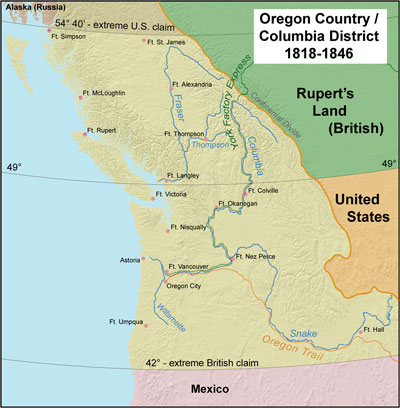
Religious Winds of Change
a partial representation and chronology
Introduction - Cliff SiJohn Reflects
Prophecies of Circling Raven (Coeur d'Alene), Shinning Shirt (Flathead), and Coyote's story (Wasco)
What is this all about?
Keep in mind that Oregon Territory was only established with England in 1846, the area disputed between tribes, British/Canadians, French/Canadians, and Americans. In 1846 the 49th Parallel separate Canada to the north and the 42nd Parallel Mexico/Spain to the south, so the coast to the Rockies only became US Oregon territory in 1846, and subdivided into Washington Territory in 1852, with Isaac Stevens it first governor at 35 years of age in 1853. So, along with fur traders, American missionaries were settling and "colonizing" in this disputed land before 1846.

1804-5 - Lewis and Clark and "Black Book" among the Nez Perce and other tribes along the Columbia River.
1820s - French-speaking Iroquois trappers and traders settled in with the Flathead, sharing their Catholicism.
1825 - Hudson's Bay Company promoted Anglican Church. Gov. George Simpson requested from Alexander Ross at the Spokane House two native students for his school at Fort Gary, on the Red River Winnipeg. Spokane Garry, son of a headman, went; received an Anglican education; returned in 1829 to share the teachings of the "Black Book." Among those who heard his words were the Spokane and Coeur d'Alene, and other tribes, as well as the Nez Perce, among them Lawyer (son of Twisted Hair). The Nez Perce also sent Ellis to the Red River Mission in 1830, grandson of a prominent headman.
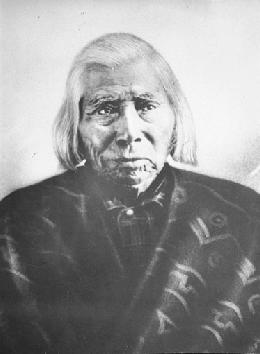
Spokane Chief Garry (1811 -
1892) Photo by Sherman Blake,
Courtesy UW
Special Collections (Neg. L 93.68.10.10)
1831 - separate and successive delegations of Flathead and Nez Perce went to St. Louis (Clark's Home) to bring back the "Black Book" along with the "Black Robes." Of the Nez Perce, only Rabbit Skin succeeded, though killed among the Blackfeet upon his return. "The request from the wilderness was heard."
Why the requests for the Black Robes?
1836 - the first Catholic mission in Oregon Territory established, just west of the Cascades along the Columbia River. In 1838 held mass and baptisms at Fort Walla Walla for the Cayuse and Walla Walla.
1836 - Presbyterian missionaries responded. The very stern Henry and Eliza Spalding went among the Nez Perce, who "lacked any form of religion," settling at the mouth of Lapwai Creek. Asa Smith settled at Kamiah in 1839. And Marcus and Narcissa Whitman went to Fort Nez Perce (Walla Walla) and Cayuse Country. Among early converts and leaders were Timothy, Joseph (whose son would carry the same name but not the same conviction), Lawyer and the young Ellis.
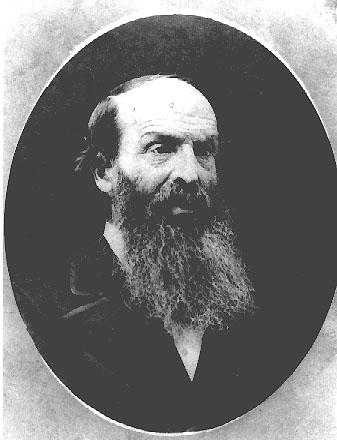
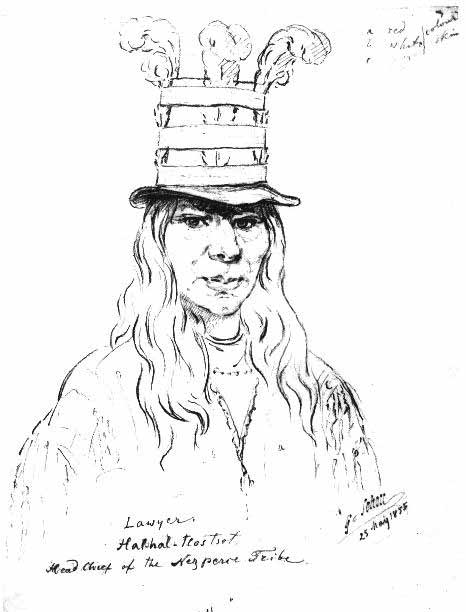
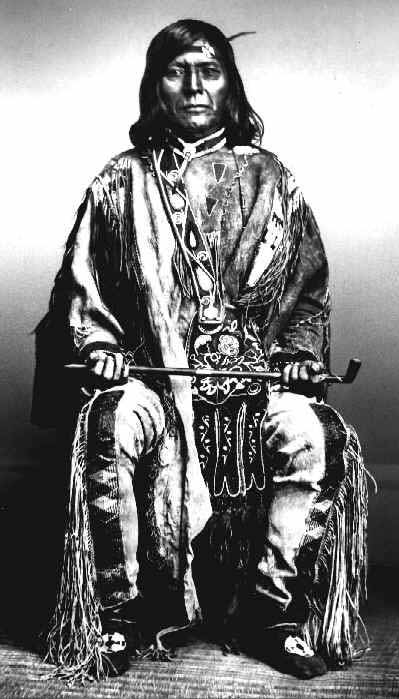
Spalding, Lawyer and Timothy
1847 - measles epidemic among the Cayuse, and while medicine dispensed among the Cayuse, half died and many blamed the missionaries. On November 28th, the Whitmans and 11 other whites at the mission were killed by the Cayuse. Soon after the Spalding left the Nez Perce. The Presbyterian mission was only re-established in the 1870s with Kate and Sue McBeth, continuing the zeal and fervor to extinguish "heathenish" Indian culture started by the Spaldings. With Kate's death in 1915, so to the zeal to extinguish Indian traditions.
1838 - Henry Perkins built Wasopam, a Methodist mission at The Dalles along the Columbia River and began preaching the "good word" among the Wasco, Warm Springs and other regional tribes. But these families seldom experienced the "heavy-handed" conversion techniques exhibited by the Presbyterians, and hence had less effect on the tribes.
1840 - Father DeSmet traveled to the Bitterroot valley, returning the following year with other Jesuit priests, such as Point and Mengarini, and established the St. Mary's Mission among the Flathead. In 1842 DeSmet traveling to Fort Colville met Stellam at the mouth of Lake Coeur d'Alene, "found wandering lost on the prairie and taken in to share each others ways." Father Point establishes first Coeur d'Alene mission, "Sacred Heart of Jesus," on the flood-plan of the St. Joe River. Father Joset moves to a hill overlooking the Coeur d'Alene River, and with Father Ravalli's architectural guidance and labor of the Coeur d'Alenes, "without a nail," build the Cataldo Mission, out of respect for a dear priest. But as it was along the increasingly traveled route of the Mullen Trail, the Sacred Heart Mission was moved to a remote area along Hangman Creek in 1878, joined by the Sisters of Charity and developed a boarding school. Church completed in 1882. Schitsu'umsh video
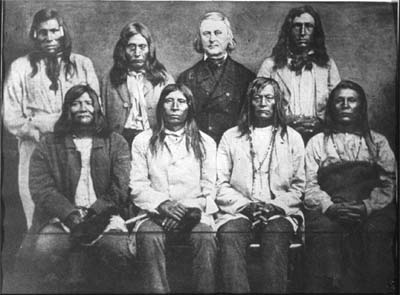
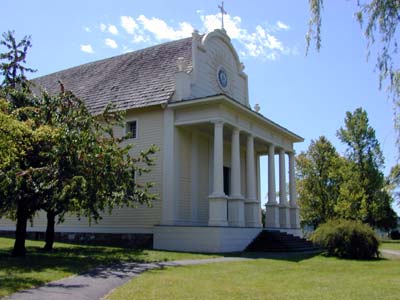
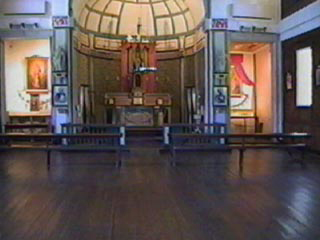
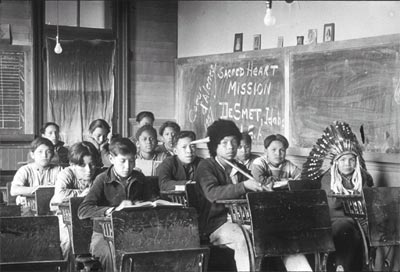
Appeal and Conversion strategies of the Catholic and Presbyterian missions. What were the strategies used by the Catholic and Presbyterian missionaries? Among them: language, personal names, effect on landscape, Indian leadership and schism, boarding schools, regulations and "Solders of the Sacred Heart," federal policies, "reduction system," farming, others.
Why today, are Catholics so much more successful throughout the Plateau?
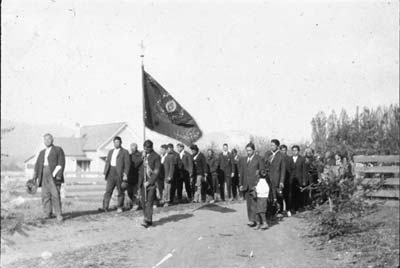
Consequences and Contrasts.
What are among the most alien and hence traumatic Christian concepts and practices imposed on the Indigenous populations?
Why potentially traumatic?
How do those Christian concepts and practices contrast with Indigenous concepts and practices?
1930s - missionary strategies change, to more accommodation, and even cultural and traditional "craft" encouragement. Exemplified by Father Byrne among the Coeur d'Alene. Corresponds with changed BIA policies of John Collier and the Indian Reorganization Act of 1934.
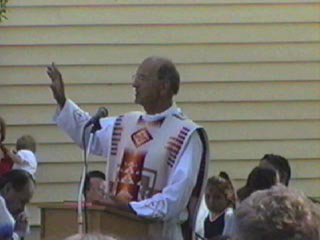
Father Connolly at Cataldo 2002